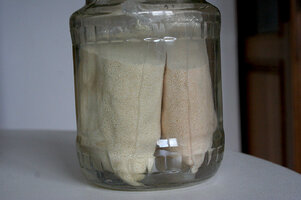Just a safety warning: DO NOT MIX bleach and peroxide! It can cause serious harm, especially as peroxide solutions are stabilized with acids. Acids and bleach should not be mixed.
Up to the user, bleach gets the job done in a day or hours...
Up to the user, bleach gets the job done in a day or hours...







